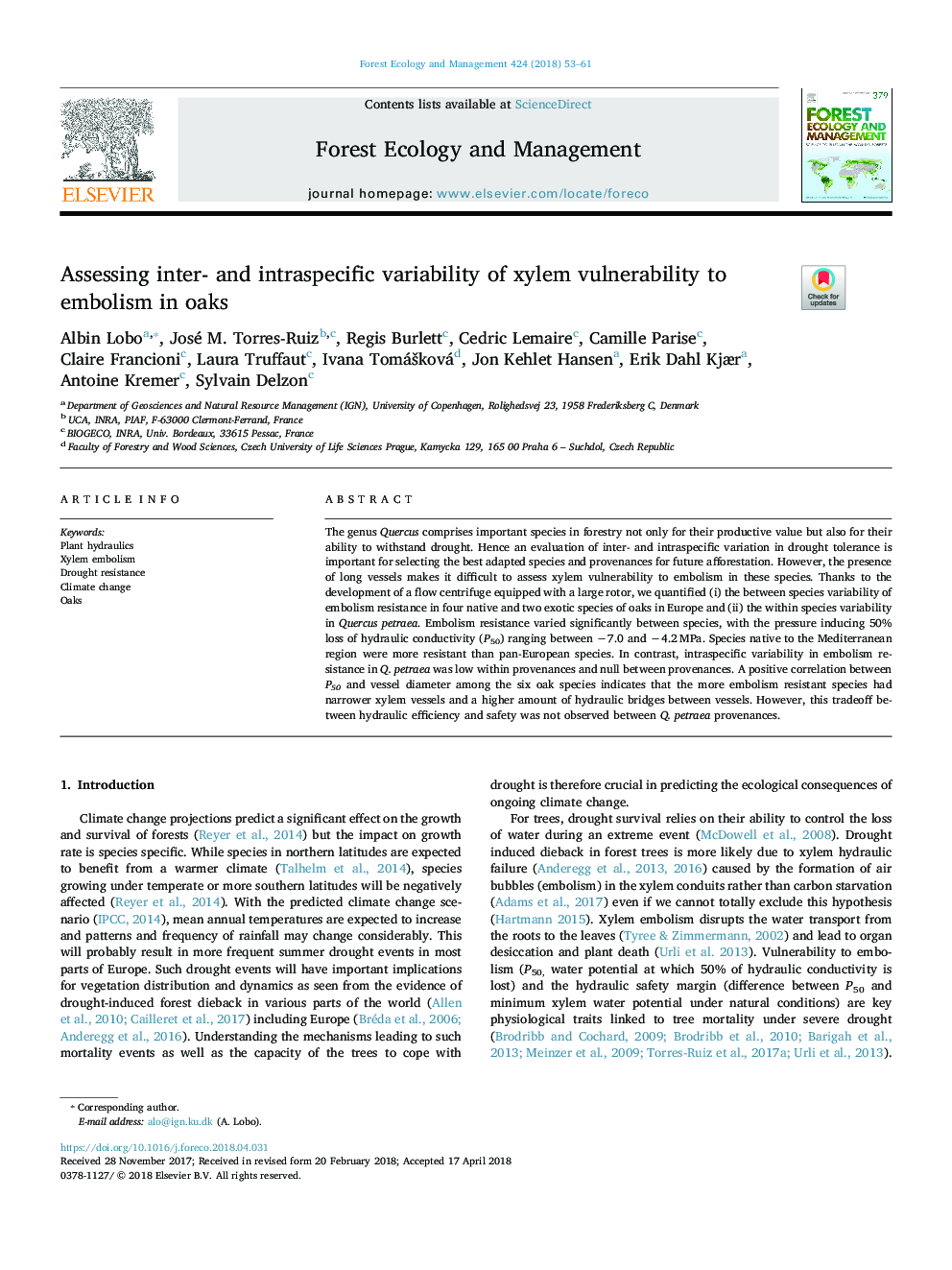| Article ID | Journal | Published Year | Pages | File Type |
|---|---|---|---|---|
| 6541586 | Forest Ecology and Management | 2018 | 9 Pages |
Abstract
The genus Quercus comprises important species in forestry not only for their productive value but also for their ability to withstand drought. Hence an evaluation of inter- and intraspecific variation in drought tolerance is important for selecting the best adapted species and provenances for future afforestation. However, the presence of long vessels makes it difficult to assess xylem vulnerability to embolism in these species. Thanks to the development of a flow centrifuge equipped with a large rotor, we quantified (i) the between species variability of embolism resistance in four native and two exotic species of oaks in Europe and (ii) the within species variability in Quercus petraea. Embolism resistance varied significantly between species, with the pressure inducing 50% loss of hydraulic conductivity (P50) ranging between â7.0 and â4.2â¯MPa. Species native to the Mediterranean region were more resistant than pan-European species. In contrast, intraspecific variability in embolism resistance in Q. petraea was low within provenances and null between provenances. A positive correlation between P50 and vessel diameter among the six oak species indicates that the more embolism resistant species had narrower xylem vessels and a higher amount of hydraulic bridges between vessels. However, this tradeoff between hydraulic efficiency and safety was not observed between Q. petraea provenances.
Related Topics
Life Sciences
Agricultural and Biological Sciences
Ecology, Evolution, Behavior and Systematics
Authors
Albin Lobo, José M. Torres-Ruiz, Regis Burlett, Cedric Lemaire, Camille Parise, Claire Francioni, Laura Truffaut, Ivana TomáÅ¡ková, Jon Kehlet Hansen, Erik Dahl Kjær, Antoine Kremer, Sylvain Delzon,
